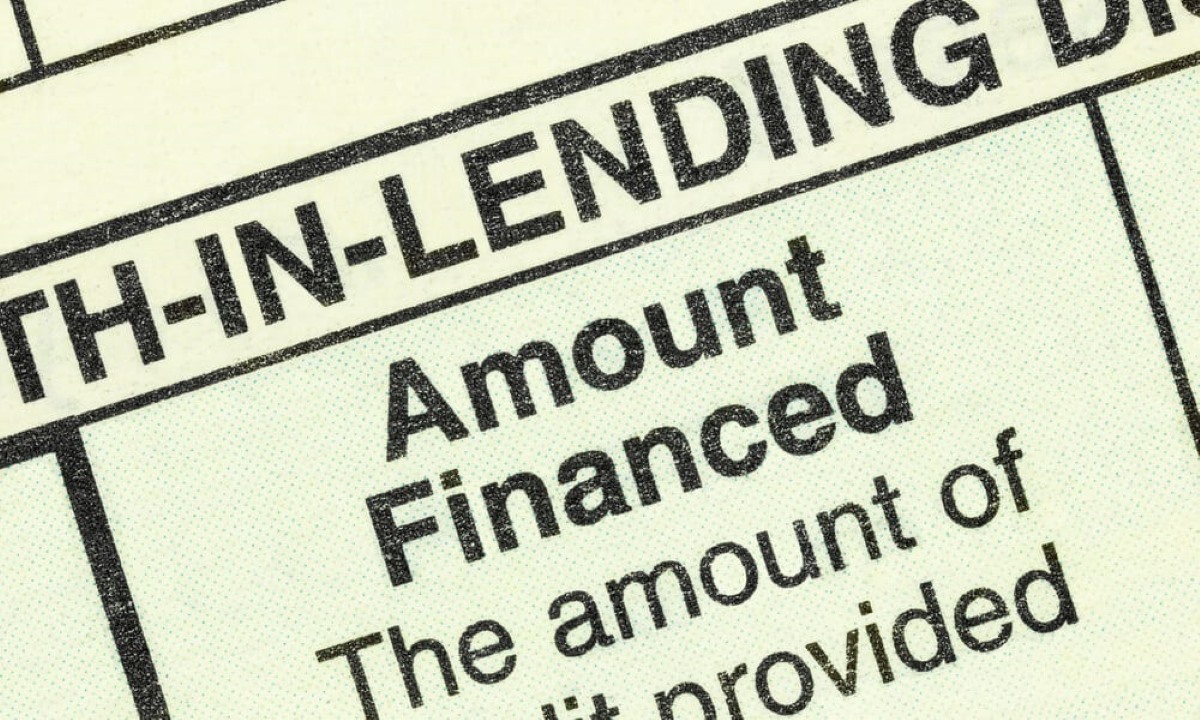

Finance
What Is The Grace Period For IFTA Stickers?
Published: February 19, 2024
Learn about the grace period for IFTA stickers and how it impacts your finances. Understand the implications and avoid penalties.
(Many of the links in this article redirect to a specific reviewed product. Your purchase of these products through affiliate links helps to generate commission for LiveWell, at no extra cost. Learn more)
Table of Contents
- Understanding the Importance of IFTA Stickers for Commercial Vehicles
- What Are IFTA Stickers and Their Purpose?
- Understanding the Timeframe for Obtaining and Displaying IFTA Stickers
- Potential Ramifications for Non-Compliance
- Steps for Securing IFTA Compliance Markers
- Empowering Compliance and Operational Efficiency
Introduction
Understanding the Importance of IFTA Stickers for Commercial Vehicles
When it comes to operating commercial vehicles, especially those involved in interstate transportation of goods, compliance with regulations is paramount. One crucial aspect of this compliance is the International Fuel Tax Agreement (IFTA), which aims to simplify the reporting and payment of fuel taxes by interstate motor carriers. An integral component of IFTA compliance is the IFTA sticker, which serves as a visual indicator of a vehicle's compliance with IFTA regulations.
In the fast-paced world of commercial transportation, understanding the significance of IFTA stickers is essential for fleet managers, truck drivers, and anyone involved in the logistics and transportation industry. This article delves into the intricacies of IFTA stickers, shedding light on their purpose, the grace period associated with them, and the repercussions of operating without a valid IFTA sticker. Additionally, it provides insights into the process of obtaining IFTA stickers, empowering readers with the knowledge needed to ensure compliance and avoid potential penalties.
In the sections that follow, we will explore the fundamentals of IFTA stickers, the grace period associated with their issuance, the potential consequences of not having a valid IFTA sticker, and the steps involved in obtaining these crucial compliance markers. By the end of this article, readers will have a comprehensive understanding of the role that IFTA stickers play in the commercial transportation landscape and the importance of adhering to the regulations governing their use.
Understanding IFTA Stickers
What Are IFTA Stickers and Their Purpose?
IFTA stickers, also known as IFTA decals, are adhesive markers that are affixed to qualifying commercial vehicles to signify compliance with the International Fuel Tax Agreement. This agreement, established among the lower 48 U.S. states and 10 Canadian provinces, facilitates the reporting and payment of fuel taxes by interstate motor carriers. The primary purpose of IFTA stickers is to streamline the process of calculating and remitting fuel taxes, eliminating the need for carriers to obtain fuel permits for each jurisdiction they operate in.
These stickers are a visual representation of a commercial vehicle’s compliance with IFTA regulations and serve as an essential tool for enforcement officers to quickly identify compliant vehicles during roadside inspections. IFTA stickers typically display the vehicle’s license plate number and the issuing jurisdiction, providing a clear indication of the vehicle’s compliance status.
It’s important to note that IFTA stickers are not a standalone solution for compliance; they are part of a broader framework that includes accurate record-keeping, fuel purchase documentation, and regular reporting. However, they play a crucial role in simplifying the administrative burden associated with fuel tax compliance for interstate carriers.
For fleet managers and trucking companies, understanding the nuances of IFTA stickers is vital for ensuring that their vehicles are equipped with the necessary credentials for interstate operations. By adhering to IFTA regulations and properly displaying IFTA stickers, carriers can navigate the complex landscape of fuel tax reporting with greater ease and efficiency.
Grace Period for IFTA Stickers
Understanding the Timeframe for Obtaining and Displaying IFTA Stickers
Upon obtaining a new vehicle or entering the interstate transportation sector, commercial carriers often encounter a grace period for obtaining and displaying IFTA stickers. The grace period allows for a reasonable timeframe during which carriers can secure the necessary stickers and ensure compliance with IFTA regulations without facing immediate penalties for non-compliance.
While the specific duration of the grace period may vary by jurisdiction, it is typically designed to provide carriers with a window of time to complete the registration and sticker acquisition process. During this period, carriers are expected to initiate the application for IFTA stickers and take proactive steps to obtain them in a timely manner.
It’s important for carriers to be aware of the grace period associated with IFTA stickers, as failing to adhere to the prescribed timelines can result in potential penalties and disruptions to operations. By understanding and complying with the grace period requirements, carriers can avoid unnecessary complications and ensure that their vehicles are properly credentialed for interstate travel.
It’s worth noting that the grace period is not a blanket exemption from IFTA compliance; rather, it is a transitional allowance intended to facilitate the seamless integration of new vehicles or carriers into the IFTA reporting framework. During this period, carriers are still expected to adhere to fuel tax reporting requirements and maintain accurate records, even if the IFTA stickers have not yet been obtained.
Overall, the grace period for IFTA stickers serves as a pragmatic mechanism for supporting compliance among commercial carriers, recognizing the logistical and administrative considerations involved in obtaining and displaying these essential markers of IFTA compliance.
Consequences of Not Having a Valid IFTA Sticker
Potential Ramifications for Non-Compliance
The absence of a valid IFTA sticker on a commercial vehicle can lead to a range of consequences, potentially impacting both the carrier and the vehicle operator. It’s crucial for carriers to understand the potential ramifications of non-compliance and the importance of promptly obtaining and displaying IFTA stickers to avoid disruptions and penalties.
One immediate consequence of operating a vehicle without a valid IFTA sticker is the heightened risk of being flagged during roadside inspections. Enforcement officers routinely check for IFTA stickers as part of their compliance assessments, and the absence of these markers can trigger additional scrutiny and potential repercussions. This can result in delays, fines, and administrative hassles for carriers and drivers.
Furthermore, non-compliance with IFTA sticker requirements can lead to financial penalties and citations. Carriers may face fines for operating without the necessary credentials, and these penalties can escalate if the non-compliance persists. In addition to monetary sanctions, repeated violations of IFTA regulations can tarnish a carrier’s compliance record and lead to increased scrutiny from regulatory authorities.
From an operational standpoint, the absence of IFTA stickers can disrupt the seamless flow of interstate transportation. Carriers may encounter challenges at weigh stations, border crossings, and other inspection points, potentially resulting in delays and disruptions to delivery schedules. These operational inefficiencies can have cascading effects on the carrier’s reputation and customer satisfaction.
Moreover, non-compliance with IFTA regulations can erode trust and credibility within the industry. Carriers that consistently fail to adhere to IFTA requirements may face reputational damage, hindering their ability to secure contracts and partnerships within the transportation sector.
Overall, the consequences of not having a valid IFTA sticker extend beyond mere regulatory infractions; they can impact operational efficiency, financial stability, and the overall standing of a carrier within the commercial transportation ecosystem. By recognizing the potential ramifications of non-compliance, carriers can prioritize the timely acquisition and display of IFTA stickers, mitigating the risks associated with operating without these essential credentials.
How to Obtain IFTA Stickers
Steps for Securing IFTA Compliance Markers
Obtaining IFTA stickers is a fundamental aspect of ensuring compliance with fuel tax reporting requirements for commercial vehicles engaged in interstate transportation. Carriers can navigate the process of acquiring IFTA stickers by following a series of essential steps designed to streamline the application and issuance process.
Step 1: Verify Eligibility
Before initiating the application for IFTA stickers, carriers should ensure that their vehicles meet the eligibility criteria for participation in the International Fuel Tax Agreement. This involves confirming that the vehicles are used for interstate transportation of goods and that they meet the specified weight thresholds for qualifying as commercial vehicles under IFTA regulations.
Step 2: Complete the Application
Carriers can obtain the official application for IFTA stickers from the relevant jurisdiction’s designated agency responsible for fuel tax administration. The application typically requires detailed information about the carrier, including vehicle details, fleet size, and operational scope. Completing the application accurately and comprehensively is crucial for expediting the processing of IFTA sticker requests.
Step 3: Submit Required Documentation
Alongside the application, carriers are typically required to submit supporting documentation, which may include proof of vehicle ownership, registration documents, and evidence of compliance with safety and emissions standards. Ensuring that all necessary documentation is provided at the time of application can prevent delays in the issuance of IFTA stickers.
Step 4: Await Processing and Issuance
Upon submission of the application and supporting documents, carriers must await the processing of their IFTA sticker requests. The processing time may vary by jurisdiction, and carriers are advised to monitor the status of their applications through the designated administrative channels. Once approved, carriers will receive the IFTA stickers for affixing to their qualifying vehicles.
Step 5: Display IFTA Stickers
After receiving the IFTA stickers, carriers should promptly affix them to the designated locations on their vehicles, ensuring that the stickers are clearly visible and unobstructed. Properly displaying IFTA stickers is essential for signaling compliance during roadside inspections and other compliance assessments.
By following these steps and adhering to the prescribed guidelines for obtaining IFTA stickers, carriers can proactively demonstrate their commitment to compliance and streamline the process of fuel tax reporting for their interstate operations.
Conclusion
Empowering Compliance and Operational Efficiency
In the dynamic landscape of commercial transportation, adherence to regulatory requirements is a cornerstone of operational success and industry credibility. The significance of IFTA stickers in facilitating the seamless reporting and payment of fuel taxes cannot be overstated, and their role as visual indicators of compliance underscores their importance for carriers engaged in interstate operations.
By gaining a comprehensive understanding of IFTA stickers, including their purpose, the grace period associated with their issuance, and the potential consequences of non-compliance, carriers can proactively navigate the complexities of fuel tax reporting and streamline their compliance efforts. The grace period provides a valuable opportunity for carriers to ensure that their vehicles are equipped with the necessary IFTA stickers, mitigating the risks associated with operating without these crucial compliance markers.
Moreover, the process of obtaining IFTA stickers is a pivotal step in the journey toward compliance, requiring carriers to diligently complete the application, submit essential documentation, and promptly display the stickers upon receipt. By following these steps and embracing a proactive approach to compliance, carriers can fortify their operational efficiency and minimize the potential disruptions and penalties stemming from non-compliance.
Ultimately, the seamless integration of IFTA stickers into the compliance framework empowers carriers to uphold regulatory standards, enhance their industry standing, and optimize their operational workflows. Through timely acquisition, proper display, and ongoing adherence to IFTA regulations, carriers can navigate the intricacies of fuel tax reporting with confidence and efficiency, positioning themselves for sustained success in the competitive landscape of commercial transportation.
As the transportation industry continues to evolve, the role of IFTA stickers as emblematic symbols of compliance and operational excellence remains paramount. By embracing a proactive and informed approach to IFTA compliance, carriers can not only fulfill their regulatory obligations but also elevate their operational agility and industry reputation, fostering long-term growth and resilience in the dynamic world of commercial transportation.














